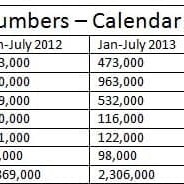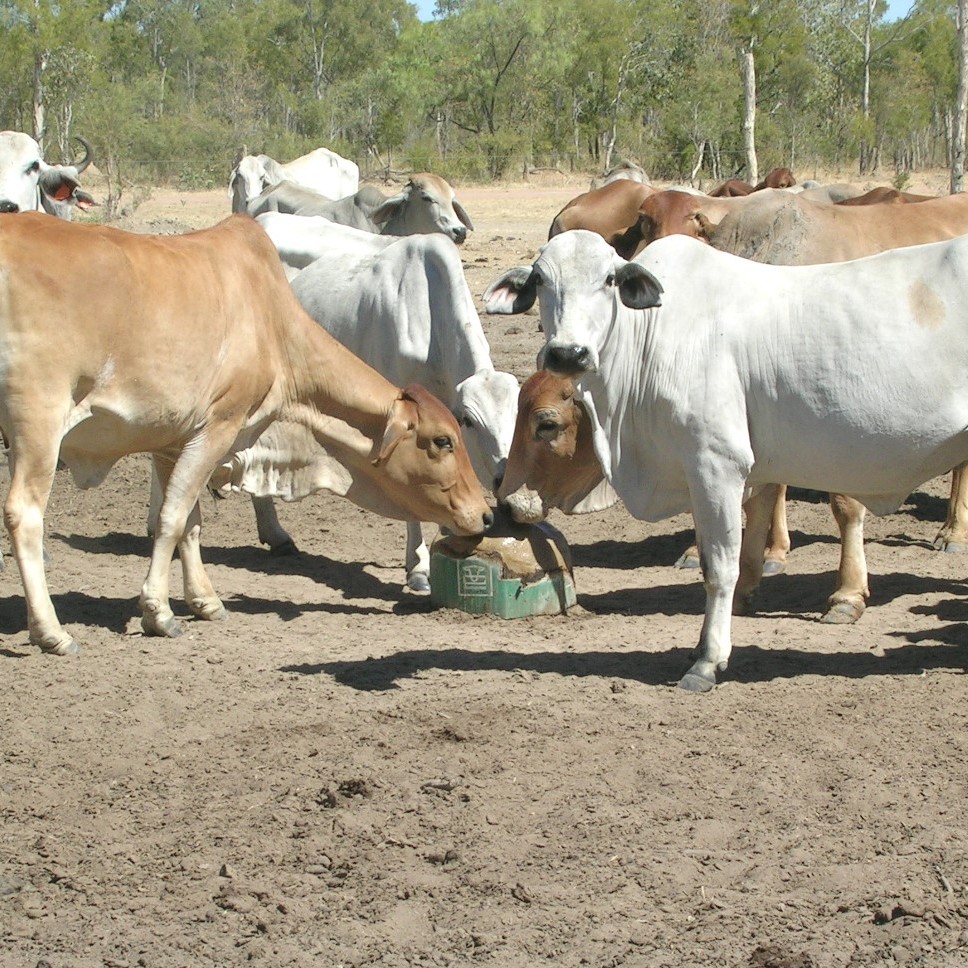Early signals are emerging that the 2013 drought across large parts of Eastern Australia will have a profound impact on both national calf output and beef production capacity for at least the next three years.
This impact is likely to be seen in a number of forms, Beef Central’s investigations show:
- a big reduction in the number of mating-age females in the national herd, due to meatworks liquidation of breeding cows over the past eight months due to drought;
- an impact on calving rates which will be seen over the upcoming spring summer period which will be reflected in modest branding rates in some regions in 2014;
- potentially poor reconception rates among northern breeding herds due to drought stress and lack of body condition in females, which could echo into low branding rates across the region again in the following 2015 year.
- Reduced cash flow and low prices will make it hard for many producers to re-build breeding capacity by investing in breeders on a rising market, when it does rain.
The only aspect that could moderate the third point would be a strong seasonal break during early spring, which would put much-needed weight back onto breeders in order to set them up for better conception performance after the upcoming mating.
Below is a summary of the three impacts on future calf-generating capacity listed above:
This year’s big cow kill:
Data recorded by Meat & Livestock Australia shows that cow and heifer slaughter for the first seven months of 2013 (January to July) is up 23pc, or 436,000 head, on the same period last year.
For the full 12 months ended July, the figure is even higher, at 650,000 head. That’s roughly equivalent to the entire breeding herd in the Northern Territory, taken out of next year’s calf production cycle.
What the figures do not show is that there was a considerable number of breeding females slaughtered this year with a calf in-utero, representing forgone 2013 calves. Some Queensland plants this year reported up to 35pc pregnants in some runs of female slaughter cattle.
Here’s a quick snapshot of the female kill performance this year and last in each state, using data supplied by MLA:
 Looking at the table published here, it’s obvious that the worst of the impact has been seen in the two largest beef production states, Queensland and NSW, where the drought impact was greatest.
Looking at the table published here, it’s obvious that the worst of the impact has been seen in the two largest beef production states, Queensland and NSW, where the drought impact was greatest.
Both were up 27pc in terms of female kill compared with the same January-July period last year. Tasmania also suffered a prolonged dry spell.
Some of the numbers recorded in processing activity in Qld, NSW, SA and Victoria represents cull females sourced out of the Northern Territory, where there no significant processing capacity.
2014 branding rates
Beyond a reduced national breeding herd population due to this year’s drought liquidation, industry stakeholders are now raising serious concerns about upcoming calving/branding and reconception rates across northern Australia.
Principal beef extension officer with Queensland DAFF in Rockhampton, Mick Sullivan, told Beef Central that there would inevitably be an impact on calving and branding rates in this year’s northern calving season, starting about now.
“You’d have to expect that conception rates this year in many regions will be right down, due to the very bad season producers have gone through since January,” Mr Sullivan said.
While the early conceptions that took place last December or earlier might produce a reasonable outcome, those later conceptions last January-February-March would be the ones that are either “much lower, or not happening at all” as the conditions deteriorated, he said.
“Generally what is seen in a tough year like this is lower conception rates, and later conceptions,” Mr Sullivan said.
“That suggests there will be a lower calving in season affected areas in the No. 4 calves (those branded next year with a ‘4’, for 2014). Those calves are also likely to be born later, meaning lighter weaners, or weaning them later.”
Combined with lower body weight in breeders due to the drought, that in turn could deliver a ‘double impact,’ delivering poor conceptions again the following year, Mr Sullivan said.
 “Not only will the conception rates in the calves that should be in the cow now be low, but getting those cows, going into next summer mating in very light in body condition, back in calf is likely to be difficult. That will impact on conceptions for calves born in 2015,” he said.
“Not only will the conception rates in the calves that should be in the cow now be low, but getting those cows, going into next summer mating in very light in body condition, back in calf is likely to be difficult. That will impact on conceptions for calves born in 2015,” he said.
While the impact would vary from district to district, and even property to property depending on drought management strategies employed during this year, basically everybody in the north, northwest and western regions would be likely to take a hit in calving performance this year and next, he said.
A break with spring rain in September or October would help moderate the effect in next year’s conception performance, however, if cows could regain some body condition in time for joining.
“The sooner we see the break, the sooner breeders will start to put on condition. But if it doesn’t rain until December, there will be another big impact next year,” Mr Sullivan said.
He drew a parallel between this year and 2009, when there was no rain until after Christmas, and a lot of breeders got into extremely poor condition, in spear-grass country, which was very much reflected in conception rates in 2010.
“But the difference was that there was widespread unseasonal rain around August, 2010, meaning the summer season started very early across Central Queensland, particularly. Breeders started putting on condition early, and that helped people get their breeding programs back on track – but the worry this year is that there’s not yet any sign of that happening again.”
MLA chief economist Tim McRae, who will start the annual assessment of for his January Industry Projections report in coming months, is already anticipating a drought impact on next year’s northern calving performance.
“If similar years like 2009, 2006 or 2003 are anything to go by, overall branding rates could see up to one million less cattle coming into the system,” Mr McRae said.
“Part of the reason why the national beef kill was so low in 2010 and again in 2011 was the impact that that low calving/branding from the 2009 drought year had,” he said.
Perhaps the difference in 2009 was that the drought stretched from “Melbourne to the tip of Cape York”, whereas this year, it was at least being buffered a little by a great season in parts of Victoria, which is now looking for cattle to agist.
Cash flow big challenge when drought breaks
Australian Agricultural Company’s chief operating officer Troy Setter said his company did not yet have enough second-round preg test data to give a reliable impression of likely reconception rates in AA Co’s northern breeding herd next year. However he conceded that there were likely to be some substantial impacts on next year’s brandings across the region.
AA Co has not been impacted as badly as some others this year in terms of drought, and enjoys the ‘luxury’ of being able to relocate cattle under pressure into better areas. However it has ‘put a lot of resources’ this year into early weaning, body condition maintenance and feeding supplements to moderate the fertility impact.
“But if it’s a late start to the next northern wet season, we would expect to see lower pregnancy rates,” Mr Setter said.
The area where the company had gone to considerable effort, and cost, to preserve was this year’s joiner heifers, and this year’s weaner heifers being set up for joining in 12 months’ time.
“We culled our cull heifers hard this year (the 18,000 Brinkworth-bought heifers currently attracting headlines on the stock route are evidence of that), and the remaining replacement heifers have been allocated the best available feed and resources, in an attempt to set them up to ensure their pregnancy rates this wet season are as good as they can possibly be.”
“Where conditions are bad, such as Headingly south of Mt Isa, we’ve been able to remove those cattle altogether to other properties, like Brunette. Looking after those heifers better was the big lesson we probably learned from the 2008/09 drought,” Mr Setter said.
He said one of the big challenges for the industry, when the drought does break, will be in producers’ cash flow position, in having to step back into the market to buy females on a rising market to rebuild breeding herds.
Breeding-up numbers from a small nucleus herd could add further delay to national herd rebuilding, Mr Setter said.



HAVE YOUR SAY